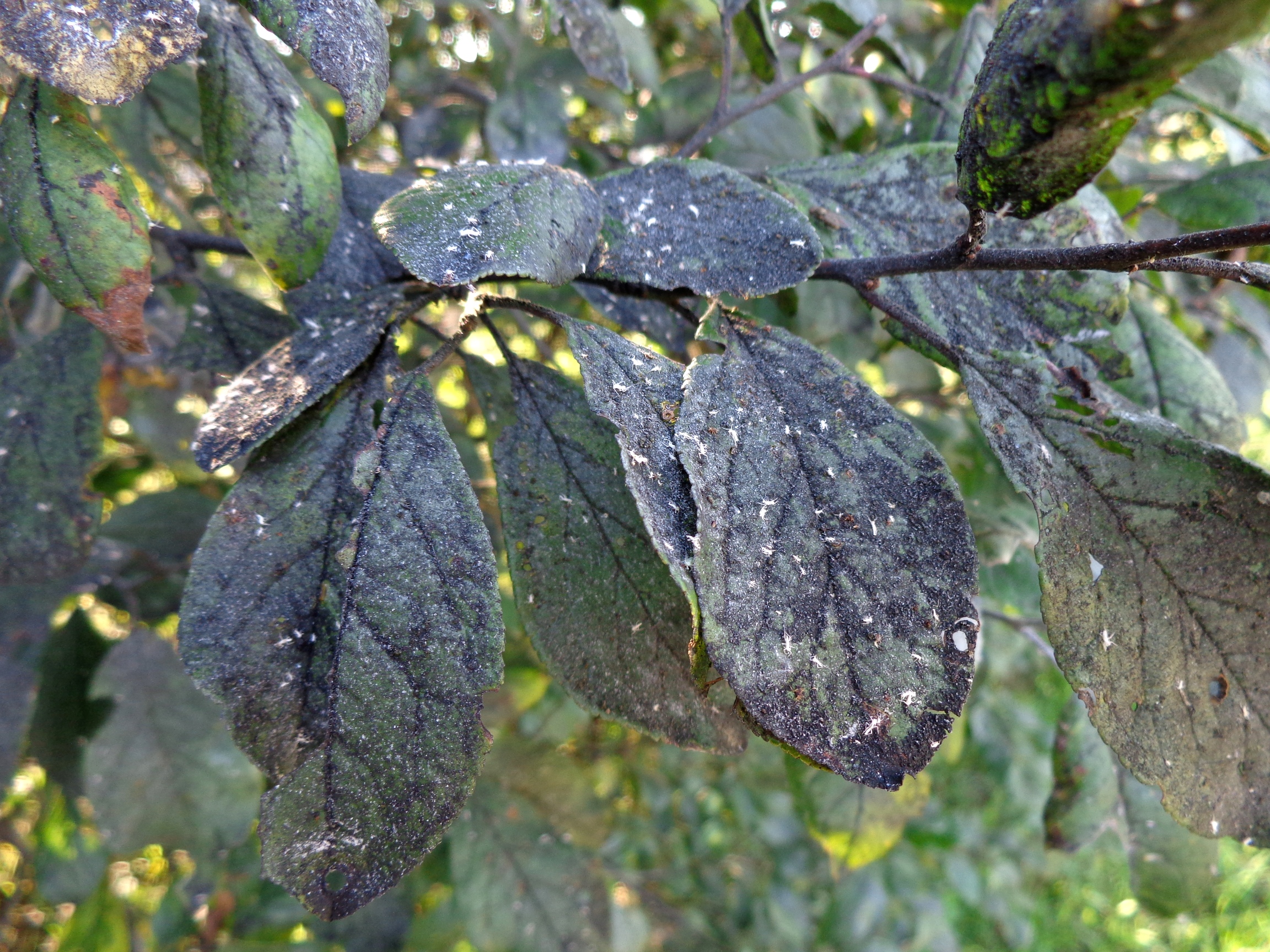
Sooty mold
Capnodium
What is Sooty mold (Capnodium)?
Sooty mold is a fungal condition characterized by a black, powdery coating on leaves, branches, and fruit. It is caused by fungi such as Capnodium spp., Fumago spp., and others. The fungi are saprophytic, thriving on insect secretions rich in sugars, known as honeydew. Sooty mold is commonly found worldwide. Infected plants include citrus, oleander, gardenia, fig, crapemyrtle, azaleas, pittosporum, and various ornamental bushes and trees. Symptoms include a black velvety coating on surfaces, which can be easily rubbed off. In lighter infestations, it may appear as spots.
How does Sooty mold (Capnodium) occur?
Sooty mold occurs when fungal spores land on surfaces coated with honeydew or plant exudates, typically produced by insects like aphids, scales, and whiteflies. The spores germinate and form mycelial strands, which grow and multiply on the nutrient-rich substrate. As the fungus feeds on the honeydew, it reproduces by producing more spores. These spores are then dispersed by wind, insects, or other means, allowing the cycle to continue when they land on new suitable surfaces, thus initiating the growth of sooty mold.
Symptoms
1 - Impacts on Plants
Sooty mold's thick coating blocks sunlight, hindering photosynthesis and impacting plant growth. It interferes with gas exchange and nutrient uptake in plants, leading to decreased overall health and productivity.
2 - Soil Health
• Sooty mold primarily grows on above-ground plant parts, so it doesn't directly affect the soil. • If the underlying cause of sooty mold is an infestation of honeydew-producing insects, their activities can disrupt soil structure and nutrient cycling.
Solutions
1 - Physical and Mechanical Measures
• Remove affected plant parts to prevent further spread of the mold. • Use water or a soft brush to gently remove the sooty mold from plant surfaces. • Prune plants to enhance airflow and reduce humidity, creating a less favorable environment for fungal growth.
2 - Professional Assistance and Monitoring
• Seek advice from a professional horticulturist or plant specialist for tailored recommendations and treatment options. • Keep an eye on plant health, insect populations, and the presence of sooty mold to detect and address issues promptly.
3 - Integrated Pest Management (IPM) Approach
• Control honeydew-producing insects through appropriate insecticides, biological controls, or cultural practices. • Encourage natural enemies of honeydew-producing insects to help control populations. • Proper watering, fertilization, and pruning practices contribute to healthier plants and reduce susceptibility to infestations.
